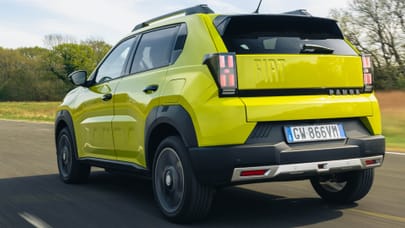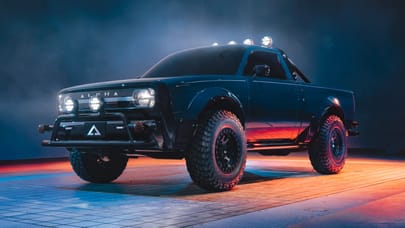

Time penalties for speeding in the Dakar can massively shake up the standings. Something that Mini X-Raid driver and Stage One winner, Nasser Al-Attiyah, sadly fell victim of today.
Having finished fastest on the first stage, it looked a perfect start for the Qatari driver. But once the timekeepers checked their stopwatches and did a few sums, it turned out that Nasser had been speeding in a restricted section of the course. Naughty boy. So he was duly slapped on the wrist with a two-minute penalty, knocking him down to seventh.
Lots of catching up for him to do in Stage 2, then. Still, there’s plenty of distance to make up some time, as today’s stretch from Villa Carlos Paz to San Juan was the longest stage of the entire event.
Stretching 625 kilometres, it was an incredibly varied stage with challenging surface changes and particularly grueling soft sand sections that played havoc with cars and bikes alike. What also didn’t help was the heat. TG flew from Buenos Aires to San Juan last night to see the cars bundle across the barren desert and boy was it hot out there – 47 degrees to be precise.
In the cockpit, whilst jiggling around in three layers of fireproof clothing with the hot engines screaming away in the back, cabin temperatures can get into the mid fifties. Having spoken to their team, the Peugeot drivers found today especially tough suffering from dehydration and feeling suitably knackered afterwards. But no one said the Dakar was easy, right?
Seeing the cars on a desert stage was fascinating. Having to trudge off-road for two hours to get to a point where we’d see the cars was harder than we thought. It was our first taste of fine Argentinean sand and our two-wheel-drive VW Amarok wasn’t quite the marauding force of a top-spec Dakar car. Something we quickly found out when it mined its back wheels so far into the sandpit that the chassis bellied itself. Cue some panicked Dakar-esque sand shovelling. That didn’t work. So we waited for a tug out, and it was only then that I realised how truly remote the conditions the competitions cars are operating in.
Freed and at our destination, we waited for the cars. And waited. Then waited some more. Even on day two of the rally, the separation between the cars was nearing the end of the stage was phenomenal.
But when they did come through you knew about it. First you’d see an incoming dustanado, then hear some noise – especially the brilliant petrol V8s – before they’d headbutt themselves through a sand wall and pass you at a ridiculous rate. They’ll then proceed to cover you in a monumental amount of dust as a little thank you.
A big shout out has to go to Robby Gordon, and the man who’s telling him where to go, Johnny Campbell. It’s his 11th attempt to become the first American to take overall Dakar victory and he’s going about it in the best way possible – by entertaining the fans on the whole way through.
Piloting his homemade 'Gordini' buggy, you hear the big American V8 throbbing away way before you see the car lolloping across the landscape – normally airborne and/or sideways. His car is a crowd pleaser: bright orange, obnoxiously loud and seemingly so powerful that the chassis contorts under power, kicking up the front wheel like a puppy offering you its front paw.
But once Robby had passed us there were a few problems. The brakes were overheating and then the car broke down near the end of the stage, costing the pair more than four hours and sinking them down to fifth.
Eleven-time Dakar winner, Stephane Peterhansel, didn’t have the best run today either finishing 27th. His teammate Carlos Sainz faired better, finishing 8th, even after knocking a biker off on the way through, a racing incident that resulted in a broken leg for the rider and later surgery.
However the real star of the second stage was Nasser Al-Attiyah who faced his adversity head on and finished first by a margin of eight-and-a-half minutes over Toyota’s South African pilot, Giniel de Villiers.
After the stage he told Top Gear, “Today was a great result and the car is feeling great and working well. The stage was very, very hard mixing up mountains, different sand and it was extremely hot. But you have to take the Dakar day-by-day, but the secret is to be strong.”
Could this be the start of some dominance? We’ll just have to wait until tomorrow to find out. Now, click through pictures above professional internetisits and tell us what you think. More updates tomorrow.
Pictures: Rowan Horncastle
Scroll down for more images
Advertisement - Page continues below
 Advertisement - Page continues below
Advertisement - Page continues below


 Advertisement - Page continues below
Advertisement - Page continues below
 Advertisement - Page continues below
Advertisement - Page continues below






















Trending this week
- Car Review
BMW iX3
- Long Term Review
Discuss: is the Volvo EX30’s design a hit, or a miss?







